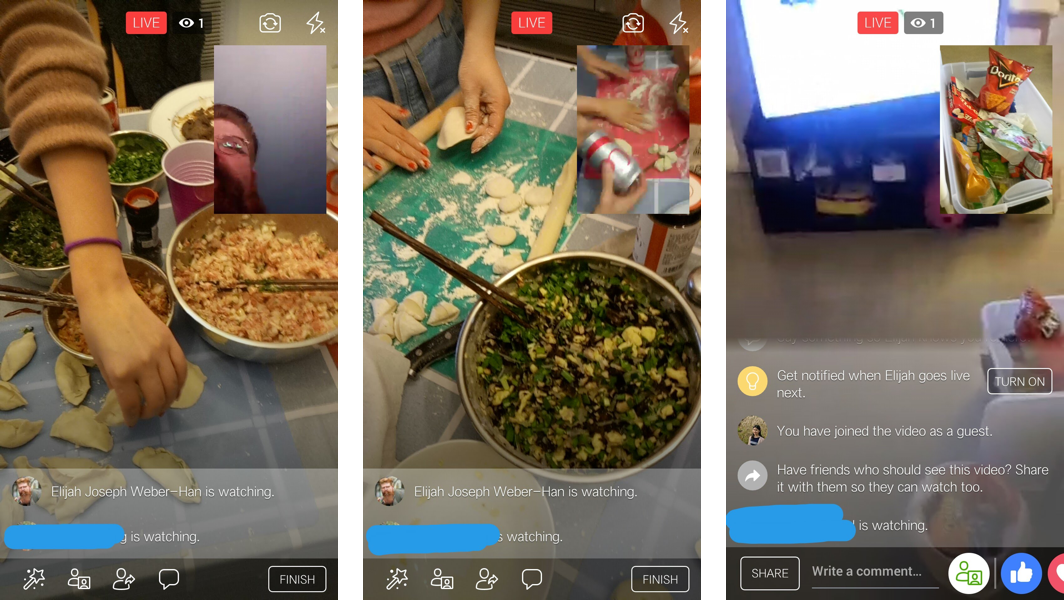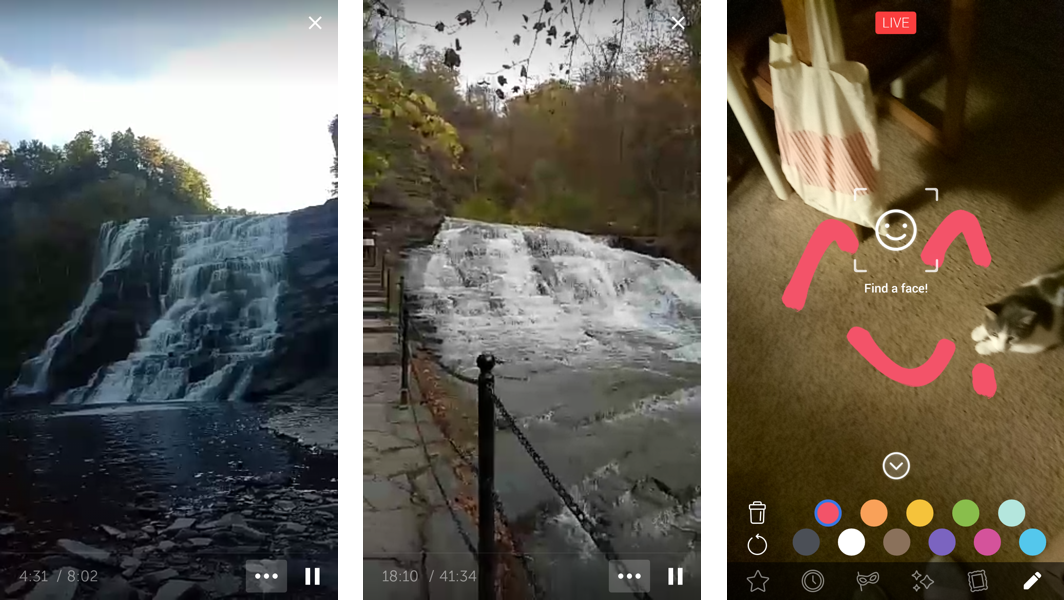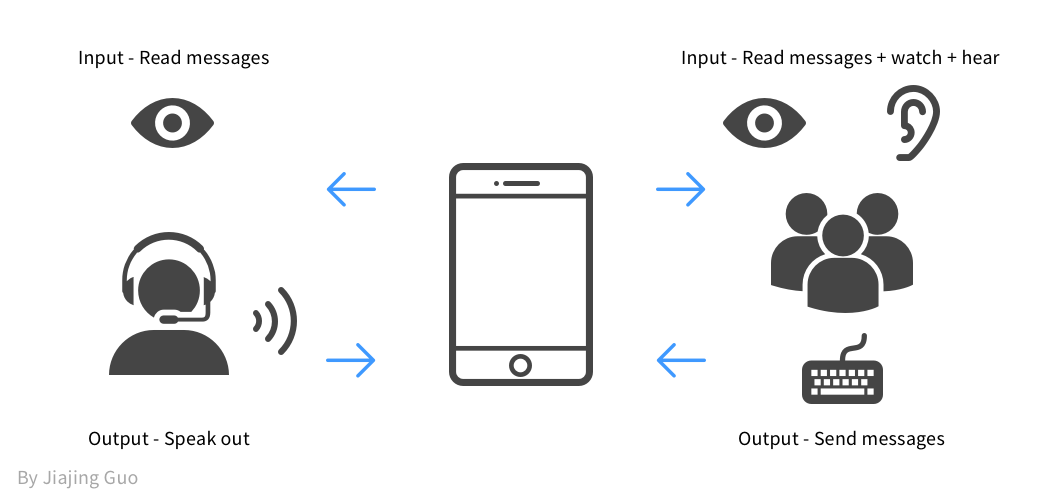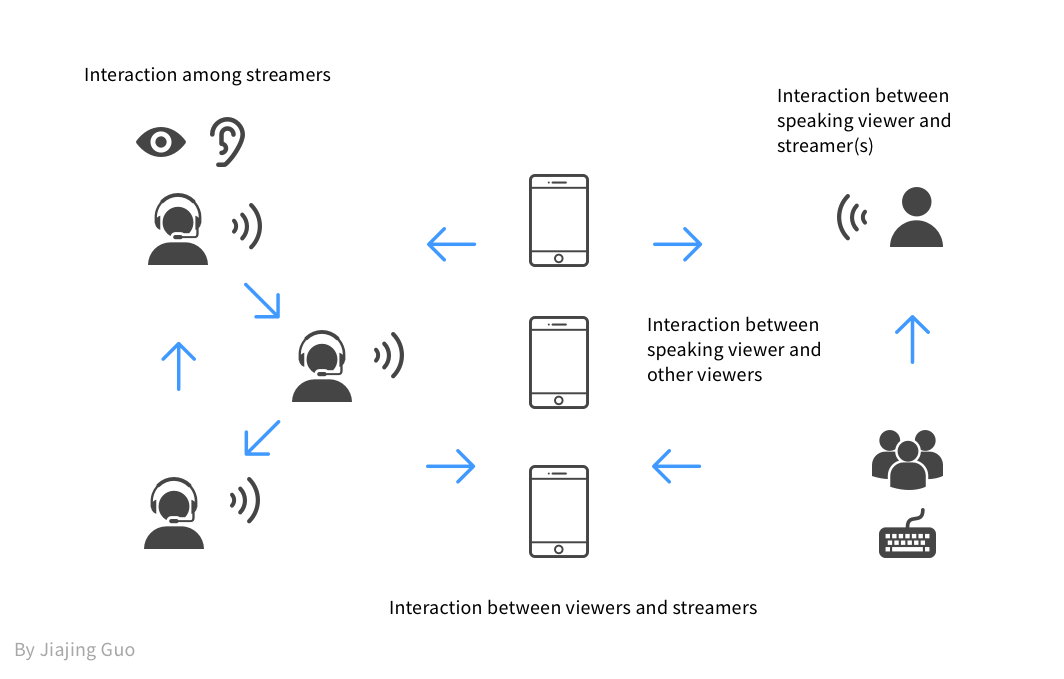Last week I went to my friend’s home for Spring Festival dinner. We were making dumplings from scratch. I thought: perhaps it is a good chance to share on Facebook?
I have been watching live streaming for a while on various platforms such as Facebook Live, YouTube Live, Periscope, YouNow, Twitch. I am fascinated with novel features of these stream tools. Facebook Live really has many fancy features such as painting, flying reactions, inviting friends and split screen. This time I streamed by myself.
What did we do?
Elijah and I tried split screen feature, in which we can shot the event from two separate camera, as the screenshot shows. You can invite your friend who is watching to participate in the stream (I did not know split screen can be evenly distributed at that time. The secret is to rotate your phone).
We shot the process of making dumplings from two sides of the table. We had eight people so it was OK to have two idlers play with live stream 😆.
It was interesting because I could see whether the dumplings were ready from Elijah’s camera in the kitchen. He was able to watch TV from my camera in the live room (in low resolution). Some friends watched our live stream.
How did it feel?
Different from other platforms, your audience on Facebook Live is mostly your friends in real life (if you do not stream from a page or set it as public). As a streamer I was quite glad to share my New Year moment with my friends, here friends I mean friends in the real world. Because it was personal life I did not share publicly. Elijah and I had much fun when sharing the video, as well as our friends who were close to the mobile device. I was not sure how other friends thought (I did not have IRB to ask them details hahah 😆). Some of them stated they were OK with it and it was fun. But some of my previous experience live streaming with friends told me they might feel isolated if I only interact with viewers in the stream.
Multi-tasking or channel blending?
Is live stream multi-tasking? It is well known that switching attention between different tasks results in longer time to finish tasks (Gendreau, 2007). Also, heavy media multi-taskers tend to be more susceptible to distractions(Ophir, Nass, & Wagner, 2009), and people with shorter focus duration tend to have lower productivity (Mark, Iqbal, Czerwinski, Johns, & Sano, 2016)
Various modalities are adopted in the system: heart/reactions/emojis, text chat, video … How can we process so much information at the same time? In an outdoor live stream, the streamer is talking, holding the smartphone to shoot, as well as reading the text messages. The audience is watching the video, reading the text messages, and typing at the same time (if they are participating the chat).
Sometimes I stream outdoor when hiking. It was fun and engaging, just a bit dangerous to look at the mobile screen and walk in the meantime.
It seems that people are multi-tasking when watching live streams, will it impact viewers’ understanding of the content, engagement, and satisfaction?
Rivulet is a project integrating multiple streams and push-to-talk (PTT) system in live streaming (Hamilton et al., 2016). The project shows this multi-stream system afforded new engaging experience for participants, but there was no accurate measurement show the cognitive load of users in comparison with single stream live stream. And even though PTT support compelling new participatory experience, it seems to only appeal to already engaged users.
Imagine in the future, if we add multiple streams, PTT or more features like painting into live stream platform, how can people process so much information?
Those two are models I illustrated: single streamer and a group of viewers which is common in current live stream platforms. Another is multi-stream model: multiple streamers and a group of users, one of whose can speak to the streamer. The latter one is much more complicated.
According to the theory of Channel Blending (Isaacs, Szymanski, Yamauchi, Glasnapp, & Iwamoto, 2012), users are able to use two or more channels towards the same goal, which is different from multi-tasking where tasks are competing for cognitive resources.
I believe live stream is more a channel blending media. Even though we are switching tasks between text messages and video, the ultimate goal is to understand the content. Research shows that comments can make the experience more interactive but too many of them will have negative impacts on users’ willingness to watch in the future (Haimson and Tang, 2017). In addition, previous research on multi-tasking focused the performance of lab-based tasks, but live streaming is entertainment activity, which means there may not be a strict “task”.
If we add multiple cameras and multiple screens, how many should we add? Two? Three? Four? What number is the maximum? There must be a kind of upper limit where viewers engage and interact without feeling distracted but enjoyable.
So what is it? Well, I do not know, but on my way looking for the answer.
Reference
Gendreau, R. (2007). The new techno culture in the workplace and at home. Journal of American Academy of Business, 11(2), 191–196.
Haimson, O. L., & Tang, J. C. (2017, May). What makes live events engaging on Facebook Live, Periscope, and Snapchat. In Proceedings of the 2017 CHI Conference on Human Factors in Computing Systems (pp. 48–60). ACM.
Hamilton, W. A., Tang, J., Venolia, G., Inkpen, K., Zillner, J., & Huang, D. (2016, June). Rivulet: Exploring Participation in Live Events through Multi-Stream Experiences. In Proceedings of the ACM International Conference on Interactive Experiences for TV and Online Video (pp. 31–42). ACM.
Isaacs, E., Szymanski, M., Yamauchi, Y., Glasnapp, J., & Iwamoto, K. (2012, February). Integrating local and remote worlds through channel blending. In Proceedings of the ACM 2012 conference on Computer Supported Cooperative Work(pp. 617–626). ACM.
Mark, G., Iqbal, S. T., Czerwinski, M., Johns, P., & Sano, A. (2016, May). Neurotics can’t focus: An in situ study of online multitasking in the workplace. In Proceedings of the 2016 CHI Conference on Human Factors in Computing Systems (pp. 1739–1744). ACM.
Ophir, E., Nass, C., & Wagner, A. D. (2009). Cognitive control in media multitaskers. Proceedings of the National Academy of Sciences, 106(37), 15583–15587.



